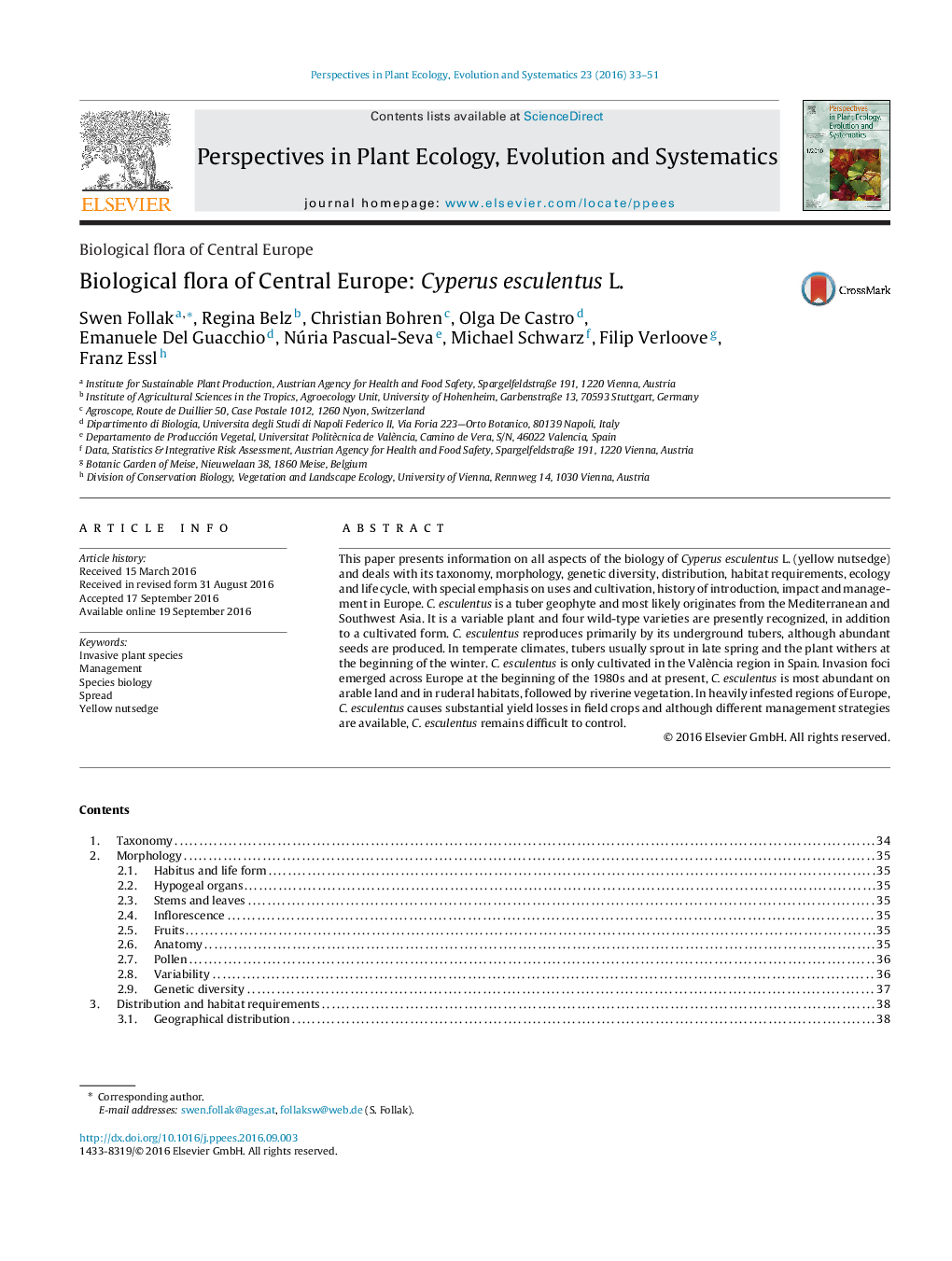| Article ID | Journal | Published Year | Pages | File Type |
|---|---|---|---|---|
| 6305706 | Perspectives in Plant Ecology, Evolution and Systematics | 2016 | 19 Pages |
Abstract
This paper presents information on all aspects of the biology of Cyperus esculentus L. (yellow nutsedge) and deals with its taxonomy, morphology, genetic diversity, distribution, habitat requirements, ecology and life cycle, with special emphasis on uses and cultivation, history of introduction, impact and management in Europe. C. esculentus is a tuber geophyte and most likely originates from the Mediterranean and Southwest Asia. It is a variable plant and four wild-type varieties are presently recognized, in addition to a cultivated form. C. esculentus reproduces primarily by its underground tubers, although abundant seeds are produced. In temperate climates, tubers usually sprout in late spring and the plant withers at the beginning of the winter. C. esculentus is only cultivated in the València region in Spain. Invasion foci emerged across Europe at the beginning of the 1980s and at present, C. esculentus is most abundant on arable land and in ruderal habitats, followed by riverine vegetation. In heavily infested regions of Europe, C. esculentus causes substantial yield losses in field crops and although different management strategies are available, C. esculentus remains difficult to control.
Related Topics
Life Sciences
Agricultural and Biological Sciences
Ecology, Evolution, Behavior and Systematics
Authors
Swen Follak, Regina Belz, Christian Bohren, Olga De Castro, Emanuele Del Guacchio, Núria Pascual-Seva, Michael Schwarz, Filip Verloove, Franz Essl,
